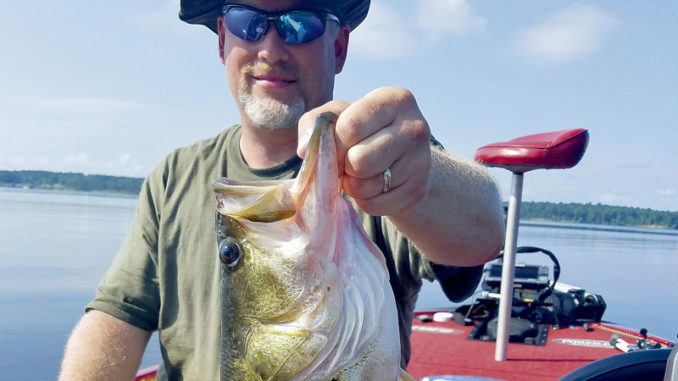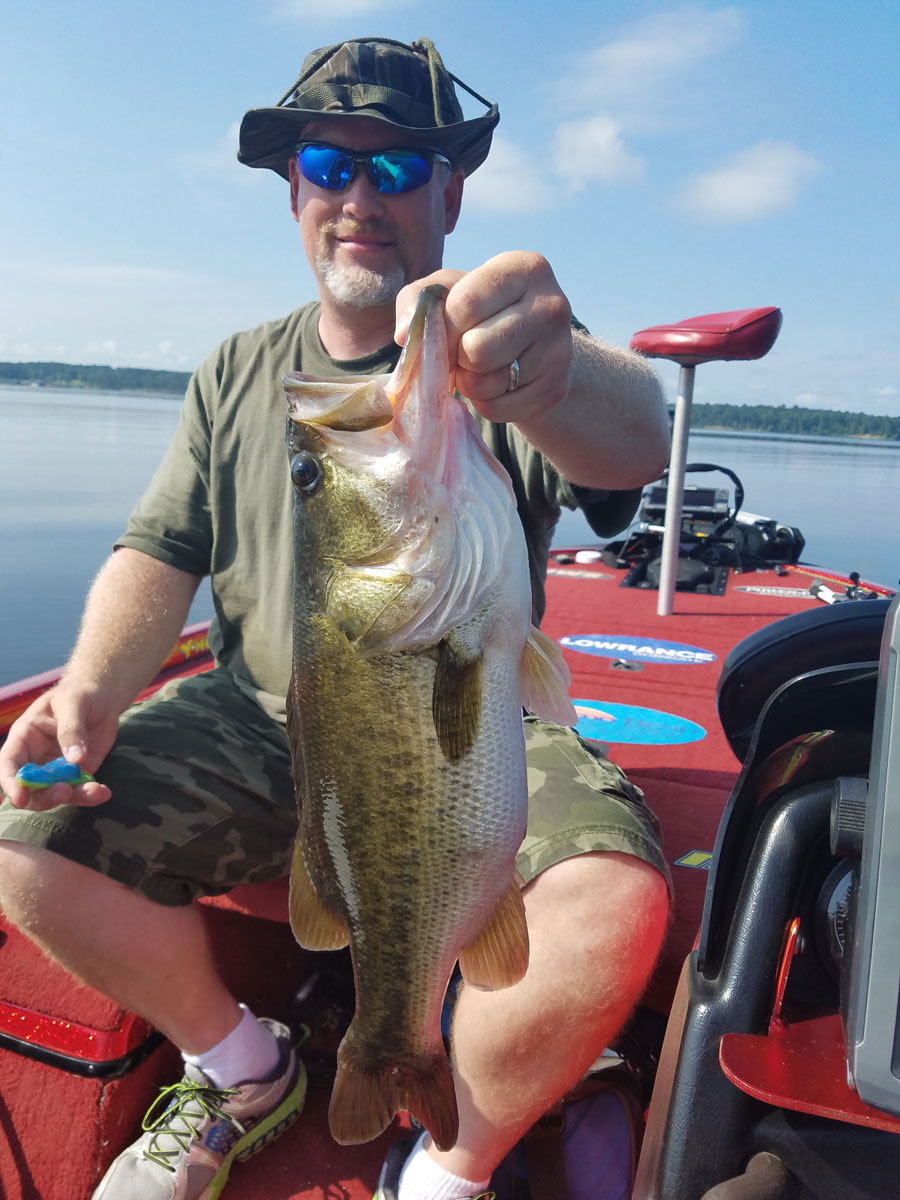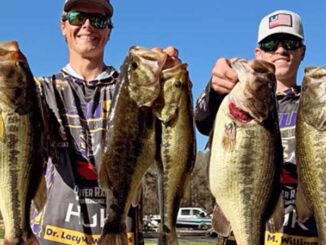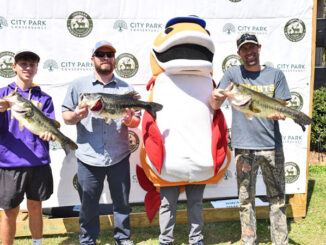
What’s trending at Toledo Bend from August to October is getting bit around the countless man-made brush piles in, say, 18- to 25-foot depths.
Think about that for a minute as you plan a trip in the dog days of summer. Everybody is targeting those brush piles, whether they strategically placed them themselves or found them with state-of-the-art marine electronics that are on nearly every boat on the water. Sometimes conflicts might arise.
There’s a way to fish your own sunken wood if you put in the time. It’ll be worth it.
Many years ago, when there was grass aplenty on the lake, I was guiding one spring day in the Texas Island area. There was a stretch of bluff walls that had eroded over the years, one that obviously sent trees cascading into the water when the edges crumbled for the last time.
Natural deadfalls

I found a tremendous number of deadfalls on the bottom in front of the bluff wall, and we ran jerkbaits through the branches and around the tree trunks and had a great time hooking up with 2s, 3s and 4s the rest of the afternoon. I never forgot that, and every now and then, I still fish eroded bluff banks along creek channels or the river, especially on the Texas side. Heck, there are miles of that from the Chicken Coop to Huxley Bay.
And I still get bit on those bass fishing trips. Guide Jack Hains of Rayne, the 1975 Bassmaster Classic champion who I shared that story with a year or two ago, gets bit, too. He’s targeting those natural deadfalls in 10- to 25-foot depths and catching crappie. He makes the effort to find them, fishes them exclusively, and it pays off.
Natural wood is hard to beat, and there’s plenty of it in this lake, which was once a national forest. Some of those trees have 3-foot bases and plenty of limbs; they’re mostly in the 10- to 15-foot and 15- to 25-foot ranges, ideal for bassing in the heat. The hardwoods will be there forever.
Fish them with bruise- or pumpkinseed-colored jigs or Carolina-rigged and drop-shotted soft plastics, and, if the bass are suspended up some in the water column, deep-diving crankbaits. Try soft plastics in the prime colors for late summer: redbug, plum apple, junebug and junebug/red.
You might want to try that pattern to increase your chances of putting bass in the boat. It’s an option that people might be overlooking.
Deep bite
It’s a certainty the deep bite will be the best thing going 80 to 90% of the time in August. The two biggest bass caught in Bob Sealy Outdoors’ Big Bass Splash reportedly were both caught deep during that July 11-12 tournament. The biggest was a 12.41-pound beauty caught by Branden Rannekleiv of Reeves. Imagine that; a 12-pound bass boated in mid-July was probably a 14-pounder in the spring.
If you want to have an opportunity to catch a big one now, you pretty much have to go offshore. Get out there on deep points and deep drains, turn on your marine electronics and try to find a school of fish.
I sure won’t say you can’t get bit shallow, but the window is very small, like an hour starting just before the sun comes up and the last hour of daylight. Go with plastic frogs and Delta’s Thunder Jigs. And the nighttime bite should be fair to good.
Crappie fishing is going strong and should stay that way as anglers pull slabs from brush piles in 18- to 25-foot depths. Shiners, mostly, and artificial jigs will get those crappie in the ice chest.


